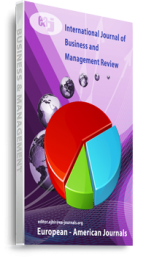Evidence has it that firms all over the world are faced with the problem of financial distress, leading to bankruptcy of some firms. In Kenya, at least 6 listed firms became insolvent and got into liquidation over a period of 10 years (2009-2018) leading to loss of income, unemployment and other negative outcomes. Literature notes that listed firms in Kenya are faced with the problem of financial risk and financial distress. Hence, the financial stability of the existing listed firms should be examined closely since the firms are expected to be stable at any point in time. Financial risk has been linked to financial distress of firms though there is little empirical evidence in developing economies particularly for firms that are listed at the Nairobi Securities Exchange in Kenya. The objective of this paper was to investigate the effect of financial risk on financial distress of firms listed at the Nairobi Securities Exchange, Kenya for the period 2009-2018. The specific objectives were: to assess the effect of Credit, Currency, Interest Rate and Liquidity Risks on financial distress of the firms listed at NSE, Kenya. This study was based on Wreckers theory of financial distress, Trade off theory, Distress theory, Early Bankruptcy theory and the Altman’s Z-Score Model for financial distress. The study adopted positivism research philosophy and explanatory non-experimental and descriptive research designs. The targeted population entailed all 66 firms listed at the Nairobi Securities Exchange, Kenya as at 2018. Time Series Cross-Sectional (Panel) secondary data was analysed. The following diagnostic tests were carried out before delving into data analysis: Multicollinearity, Outliers, Heteroscedasticity, Autocorrelation, Linearity, Goodness of Fit, Stationarity and Model Specification. Data analysis was done using descriptive statistics and inferential statistics using Binary Logistic regression model. The findings indicated that: Credit risk (p-value=0.120) was not statistically significant while currency risk (p-value=0.000), interest rate risk (p-value=0.000) and liquidity risk (p-value=0.013) were statistically significant at 5% significance levels. Listed firms in Kenya should be keen to manage their financial risk exposures in order to avoid cases of financial distress. The study recommends that required financial risk levels be set up for firms by authorities with an aim of having a yardstick for measurement mechanisms for firms’ efficiencies and protect investors.
Citation: Elias Walelaa, Job Omagwab and Stephen Muathec (2022) Financial Risk and Financial Distress: What we Learn from firms listed at the Nairobi Securities Exchange, Kenya, International Journal of Business and Management Review, Vol.10, No.6, pp.77-101
Keywords: Bankruptcy, Credit risk, Financial Distress, currency risk, financial risk, interest rate risk, liquidity ris

